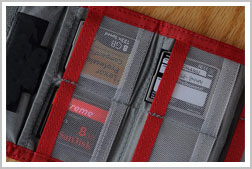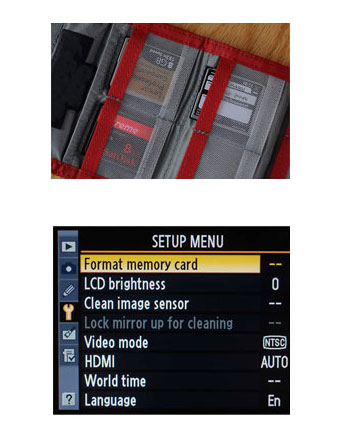Getting Started: Memory Cards and Batteries
When it comes to photography, we want to be right out there doing the fun stuff—making pictures and playing with light, composition, color and exposure. Few people want to spend much time thinking about the little, practical things like taking care of your batteries and memory cards—but, it's important.
Battery Care
Most of today's digital cameras use rechargeable lithium-ion batteries. They're great improvements over the rechargeable nickel-cadmium batteries we used to use. They hold their charge longer and, more importantly, give better information on how much power they still have. That helps determine when to recharge them.
Actually, it's safe to recharge them at any time, because lithium-ion batteries don't have a memory effect that reduces their capacity by charging too soon). However, like any battery, they have a limited life, and that's based on how many times they're recharged. In other words, it's not necessary to fully discharge a lithium-ion battery before charging it, but to get the longest life from a battery, only charge it when needed.
Select Nikon D-SLRs use batteries that contain information communicated to the camera about the status of the battery being used. (Check your manual to see if your camera does so.) When you access the Menu/Shooting Menu/Battery Info, the LCD screen reveals the following information; the battery meter shows the level of power remaining, the picture meter shows how many pictures have been taken, calibration lets you know when to calibrate the battery and battery age tells you when to get a new battery.
Most D-SLR cameras use the more traditional battery level icons located on the camera's LCD screen that indicates when the battery is fully charged, partially charged, low battery or exhausted. In either case, make sure to check with the instruction manual for complete details on how to read and access these important information screens.
The best way to avoid charging your battery unnecessarily is to have at least two batteries. That way when the battery in the camera gets low on power, you can swap it out for a fresh one. Having the batteries labeled by date purchased makes it easier to keep track of them and offers a quick indication of age.
Heat and cold are hard on batteries so try not to leave them in the car in summer or winter. If shooting in cold conditions keep that spare battery inside your coat, close to your body to keep it warm. When the first battery gets low, move it inside your jacket to warm up and replace it with the fresh one. Alternating batteries this way will help you keep shooting even in frigid conditions.
Memory Card Care
It's a good idea to label your memory cards. If you have problems with a card, make note of its number so you can set it aside to find out the reason. It's also easy to lose track of which ones have been shot. To avoid that, get in the habit of putting the blank ones label-side up in your card wallet and the ones you've shot with label-side down.
Memory cards need occasional maintenance, too. Every Nikon digital camera offers an in-camera format option. Formatting the card in-camera not only deletes the pictures, it creates a new directory on the card. This can help to avoid problems that might prevent the card from being read by your computer. Some people format after each download, once the photos are safely transferred to the computer. Others choose to do it once a month. The important thing is to do it regularly.
Keeping up with the little things, like cards and batteries, helps ensure that you get the photos you want, when you want.








